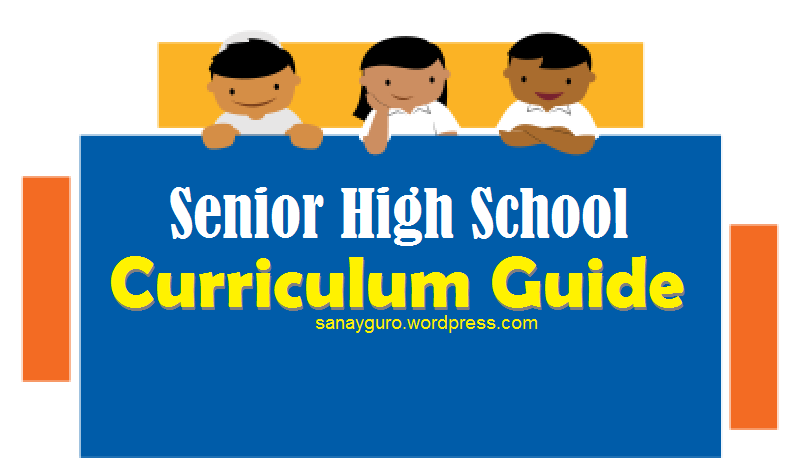
Simply select the course you are interested in that you think you are capable of being the most successful.

Source: http://www.wikihow.com/Choose-the-Right-Course


Source: http://www.wikihow.com/Choose-the-Right-Course

Source: http://www.wikihow.com/Choose-the-Right-Course

Curriculum refers to the knowledge and skills you are expected to learn. It includes the subjects you need to study and the competencies you need to have before graduation.
The SHS curriculum includes three (3) types of subjects:
∞ Core Subjects
∞ Applied Track Subjects
∞ Specialized Track Subjects
There are 15 core subjects that all SHS students will take. Two of these are different if you are under the Science, Technology, Engineering, and Mathematics (STEM) strand. These core subjects include Language, Humanities, Communication, Mathematics, Science, Social Science, Philosophy, and PE and Health subjects.
These are subjects that develop the same competencies using different content based on your chosen track or strand.
These are sets of subjects based on specific specializations. The content and competencies they cover differ based on the your chosen track or strand.
 SHS tracks are specific areas of study much like college courses and they fall under four disciplines, namely, Academic, Technical-Vocational-Livelihood (TVL), Sports, and Arts & Design. These are the subjects that will give you the competencies and advanced skills required in college or tech-voc education, entrepreneurship, employment and, most important, life.
SHS tracks are specific areas of study much like college courses and they fall under four disciplines, namely, Academic, Technical-Vocational-Livelihood (TVL), Sports, and Arts & Design. These are the subjects that will give you the competencies and advanced skills required in college or tech-voc education, entrepreneurship, employment and, most important, life.
 The Academic track has four strands: Accountancy, Business and Management (ABM); Science, Technology Engineering and Mathematics; Humanities and Social Sciences (HUMSS); and General Academic (GAS).
The Academic track has four strands: Accountancy, Business and Management (ABM); Science, Technology Engineering and Mathematics; Humanities and Social Sciences (HUMSS); and General Academic (GAS).

The TVL track also has four strands: Home Economics (HE), Information and Communication Technology (ICT), Agri-Fishery Arts and Industrial Arts.
Graduating from SHS may lead to Employment, Entrepreneurship, Higher Education, and Middle-Level Skills Development.

What does K-12 scheme really has to offer to students?
To prove that K-12 system is more than just adding two more years to high school, below are three of the many practical benefits of schooling under a 13-year education cycle:
The government believes that K to 12 curriculum in the Philippines will put Filipino students at par with the rest of the world. Truly, investing in education is the key toward reaching national growth and development.
Sources:
http://k12philippines.com/three-practical-benefits-of-the-philippines-k-to-12-curriculum/
Click to access SHS%20Student%20Primer_Colored%20HiRes.pdf
Monday is the nationwide enrolment date for the very first batch of Grade 11, according to Education Secretary Br. Armin Luistro. This time, the students should go to their schools of choice and enroll in their preferred tracks, unlike the preregistration in October which was done online.
Senior high school (SHS) refers to Grades 11 and 12, the last two years of the K-12 program that DepEd has been implementing since 2012. Students begin to study in SHS the subjects that will introduce them to their preferred career path.
High school in the old system consisted of First Year to Fourth Year. What corresponds to those four years today are Grades 7 to 10, also known as junior high school (JHS).
Take note now: “Senior high” has two grade levels and no longer means just the very last year of high school; “junior high” has four grade levels and does not mean just the second to the last year of high school.
To further explain: Under Republic Act No. 10533 (Enhanced Basic Education Act of 2013), you will have to complete Kindergarten, Grades 1 to 6 (elementary), Grades 7 to 10 (junior high school) and Grades 11 to 12 (senior high school)—in all 13 years—before you can receive a high school diploma.
Source: http://newsinfo.inquirer.net/782541/primer-senior-high-rolls-out-k-12-plan-on-monday
According to DepEd, Yes. There are two additional years will equip learners with skills that will better prepare them for the future, whether it be:
In 2011, the Department of Education has made the historic implementation of shifting from the 10-year basic education curriculum to the Kinder to 12 Program (K-12) in phases. The added two-year Senior High Track aims to equip you with knowledge and skills that will help you prepare better for your chosen path — be it higher education, employment, or entrepreneurship.
Senior High School (SHS) is the last two years of the K to 12 program that includes Grades 11 and 12.
Source: edukasyon.ph